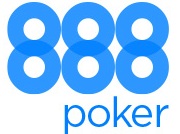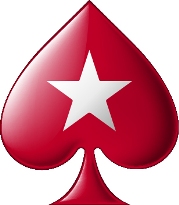Part of knowin’ when to hold ’em and when to fold ’em when playing rationally comes from knowing your chances of winning the pot in relation to how much you must invest to stay in versus the total money in the pot. David Sklansky and Mason Malmuth have written a large number of poker and general gambling books and articles over the years. We would recommend that you read as many of them as possible. We have! Ed Miller joined their team to write the excellent book Small Stakes Hold ’Em: Winning Big With Expert Play. In this and other books, they discuss the role of odds in a player’s decision making process during hands. They break the discussion down into four key areas: Pot Odds, Implied Odds, Reverse Implied Odds, and Pot Equity. We’ll summarize their points here.
TIP: When deciding how many cards will either win you a hand or get you one step closer to winning it, you must first come to a conclusion as to what hand or range of hands your opponent(s) is playing.
Pot Odds
Simply put, this divides the amount of the money already in the pot by how much it will cost you to stay in the hand. If there is $10 in the pot and it will cost you $2 to stay in, for example, you are receiving 5:1 pot odds. The table below lists the odds of completing your draw based on how many outs you have. Pot odds become much more important on the turn and river, so we’ll leave the detailed discussion for then.
Pot Odds Needed to Make Calling Correct |
|
| Number of Outs | Break-Even Pot Odds |
| 1 | 45:1 |
| 2 | 22:1 |
| 3 | 14.3:1 |
| 4 | 10.5:1 |
| 5 | 8.2:1 |
| 6 | 6.7:1 |
| 7 | 5.6:1 |
| 8 | 4.75:1 |
| 9 | 4.1:1 |
| 10 | 3.6:1 |
| 11 | 3.2:1 |
| 12 | 2.8:1 |
| 13 | 2.5:1 |
| 14 | 2.2:1 |
| 15 | 2.1:1 |
| 16 | 1.9:1 |
| 17 | 1.7:1 |
| 18 | 1.6:1 |
Implied Odds
Implied odds, the authors say, is current expectation adjusted for future betting. What this means is, it will almost certainly cost you more money to stay in the hand in future rounds. It is here that your betting position plays a large role. Let’s say you flop an openended straight draw, in which case eight cards will win you the hand, with a 4.75:1 shot on each card to come. Assume you will only win the hand if you make your straight but will definitely win the hand if you get the straight. If you are last to act, the first player bets, the second player calls, and you are now required to invest $2 into a $10 pot. This is good because it is a 5:1 investment. But wait! This is, in fact, a 5:1 investment for a 2.375:1 shot at this moment. The reason this is so is because there are two more cards to come, so you get two chances at your draw. This does assume you’ll stay in until the river, but in this example, you will definitely win if you make the straight, so it would be hard to get you out. In a real game, you must figure out when it would be best to fold.
TIP: Constantly update how worthwhile it will be for you to stay in the hand and how to go about betting. Are you going to win if you hit your draw? Which cards could come on the turn that would guarantee your win or make your hand vulnerable or even a definite loser? What betting position are you in? How can you maximize your profits ts or minimize your losses by implementing a particular betting pattern?
Let’s look at a more realistic example. You are the first to act against two other players. There is $6 in the pot. You hold Q♣-J♦, and the flop is:


 Aggressive players will make you pay to draw to your straight.
Aggressive players will make you pay to draw to your straight.
You now have an open-ended straight draw, as either an Eight or a King gives you the nut straight. If you bet for information, to see how the other players feel about needing to call a bet to stay in, and get raised and re-raised, what should you do? There is now $18 in the pot, and you need to call $4 more to stay in (4.5:1 pot odds).
First, you need to decide what you are up against. Because there was no raise before the flop, it’s unlikely anyone has a pair of Aces. It could be that a player limped in with a pair of Tens or Nines, so you may up against a set. But it’s more likely that someone played Ace-Ten or Ace-x. You are assuredly behind in the hand but have some good things going for you. First, because the other players are thought to have Aces, three are accounted for, so only seven cards (the Ace and three remaining Tens and Nines) hurt you. Eight cards give you your winning straight, so you are in the same situation as you were earlier in the chapter: putting 1/3 of the money into a pot you have a better than 50 percent chance of collecting. Assuming you are against competing Aces-up hands, these are the results:
Hold ’Em Hand with a Flop of A♥-T♣-9♠ |
|
| Hand | Percentage of Money Won |
| Q♣-J♦ | 30.4% |
| A♦-T♦ | 61.0% |
| A♣-9♥ | 8.6% |
Our simulation shows that you will win 30.4 percent of all money with your straight draw versus these hands. As 30 percent is a little less than a third, the money from the first round, and any money bet on the flop will give you the needed odds to stay in for now. So what turn cards would cause you to change your mind? An Ace is certainly trouble, as is either a Ten or a Nine. Because we have perfect information, we know we are drawing dead if any of these cards come, but do you know that for sure, based on your knowledge of the players you’re against? Could they be playing with a set? If you think so, then you’ll need to see if other dangers, such as a flush draw, are out there. J8 is a possibility, so if a Seven comes, they get their straight.
Reverse implied odds show how a weak hand does not fare well, even when it is ahead on the flop. The following example is structured after one you can find on page 34 in Miller, Sklansky, and Malmuth’s book (if, for example, you are in the big blind and three other players limp in). You hold 7♥-3♦, and you get this flop:


 Handle the truth: You won’t win
Handle the truth: You won’t win
There are so many ways to lose this hand that it’s ridiculous. You wisely check, and there is a bet behind you. Folding is certainly the best action. Miller, Sklansky, and Malmuth argue the following:
With a weak made hand, especially when the pot is small, reverse implied odds sometimes force you to fold when the pot odds seem to support continuing. You will be paying off a better hand for big bets far more often than someone will pay you off. When the pot is small, if there is a high chance you are either already beaten or will be outdrawn, fold marginal made hands (35, emphasis in original).
Pot Equity
Miller, Sklansky, and Malmuth define pot equity as “the dollar or bet equivalent to the percentage of the pot that you expect to win. That is, if the pot contains ten bets, and you have a draw to the nuts that will come in 20 percent of the time, your pot equity is two bets” (ibid). They isolate three areas in which this information helps a player decide on the best course of action.
✦ Pot equity tells you how much you are giving up if you fold. With 10 bets in the pot, you have a draw that will win you the pot 5 percent of the time. If you must call one bet to stay in, pot equity dictates that you fold, as your equity is only 0.5 of a bet.
✦ Pot equity helps you decide whether or not to grant a free card. In this case, you must add together all your opponents’ combined pot equity. If you are heads-up against a player you believe has an open-ended straight draw to beat you, you must decide if the player will pay you off more in the long run, after granting them a free card on the turn. In other words, if you know they’ll fold on the river if they miss their straight, you need to make them pay to chase their draw.
✦ A strong drawing hand gives you a large amount of pot equity. For example, with the nut flush draw after the flop, you will have a slightly better than 1/3 chance of making your flush. While it will sometimes lose to a full house or better, that’s life. With four opponents, the authors note, you are putting 20 percent of the money into the pot for a 35 percent chance of winning. You are operating at a 15 percent advantage. Get your money in the pot!










